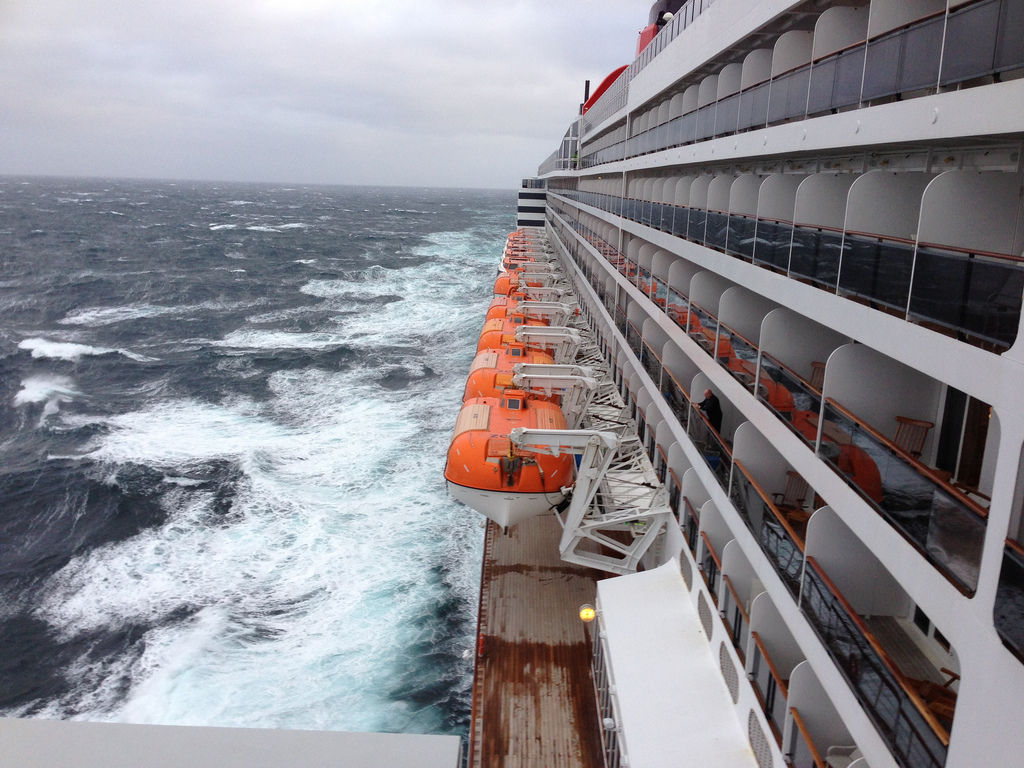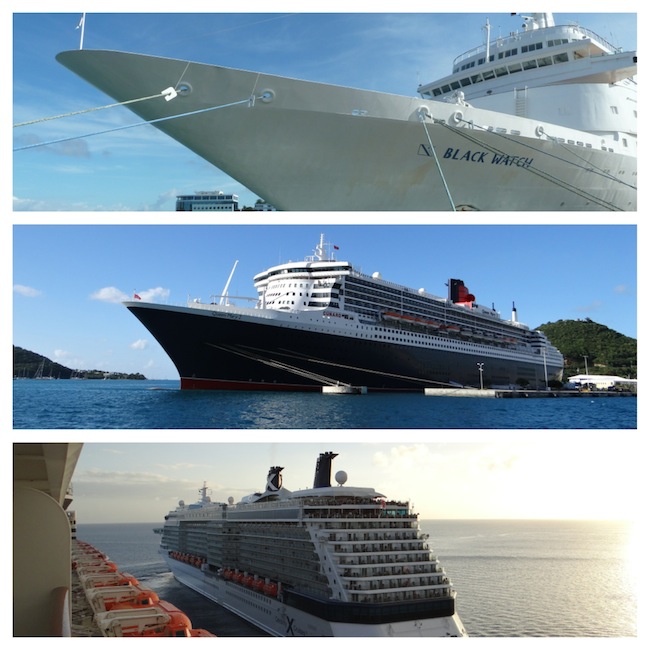TransAtlantic Crossing Observations on Cunard Queen Mary 2. The Power And Fury of the Atlantic Ocean
Atlantic Crossing Observations on Cunard Queen Mary 2. The Power And Fury of the Atlantic Ocean
This article is part of a series of observations about crossing the Atlantic that I am writing while on-board Cunard’s Queen Mary 2. While this series of observations also draws on my previous experiences of crossing the Atlantic at various times of the year, they are mostly influenced by this crossing of the Atlantic in the middle of Winter.
Some say that only the brave, the foolish and the ignorant chose to cross the Atlantic in Winter. A bit like only mad men and Englishmen go out in the midday sun!
Crossing the North Atlantic with the image of smiling people dressed in glamorous gowns and suits smiling and partying away is not always the experience everyone has. The experience can be somewhat different for those that fear any boisterous movement of the ship, or suffer from seasickness at the slightest rise and fall of the bow of a ship. It is though an experience and adventure that many relish and love.
In the elevator today, the Captain was talking to a group of passengers and he spoke about how he finds that half the passengers hope for and look forward to rough weather. The other half fear and dread it.
The fact is that the Atlantic is a monster at times. It is huge, powerful and can be unforgiving, even for massive and well designed liners like the Queen Mary 2. There is, though, no other ship that you would even want to consider taking to the North Atlantic at this time of the year. In fact even lesser cruise ships barely even schedule to take on the might of the North Atlantic route to New York in summer other than because they have to reposition the ship for the Summer/ Winter seasons.
On this crossing, a bit like the one I also did on the QE2 in December 2004, we have had many days of bouncing on the strong 30 − 40 foot swells caused by ferocious Force 8 and even Force 11 gales.
On the first few days many naive people found themselves feeling queasy and seasick. The medical centre did a roaring trade in the $100 anti-seasickness jabs. There were many empty tables at dinner on the second night after departure from Southampton (the first full day at sea). On the QE2 trip only one third made it to dinner, on the bigger and even more robust QM2 that number was more like half to two-thirds. Things calmed down but then we entered a large storm on the 3rd evening from around 9pm, despite sailing further south to avoid some of the low pressure systems that cause the storms.
You realise just how powerful nature and the sea is when you see how it can toss about even the grand and massive Queen Mary 2. I never feel unsafe though, as the ship is designed to slice through the seas and ride the swells. But it does twist and bob. During the night drawers flew open, glasses were tossed on the floor, bathroom items strewn over the floor – and you have a mini roller coaster type ride in your sleep. I tend to sleep quite well through it, waking sometimes if something crashes around the cabin from the noise rather than the movement. Though a lot of people seemed to sleep less well, including some of the crew.
I never ever feel unsafe or at risk on the Queen Mary 2, nor did I on the Queen Elizabeth 2, while on a stormy passage in the Atlantic. The ships may move about, they may creak – but you can sense and feel they know how to ride and endure what the sea is doing. It is what they are designed to do.
I further realised just how well they have been designed when I listened to the tales of transatlantic crossings in the 1950s and early 1960s through the Cunard lecture program on-board. At this time up to 60 ships ran routes for all around Europe to New York, Boston and Canada – and the speaker Ted Scull spoke about the experiences on them. Ted Scull is a well known maritime writer that all ship geeks like me know about. He has written many books, and is often on-board Cunard ships talking about all things Cunard, ships and Crossings. On this trip he has been talking and showing his images of his journeys and just how uncomfortable – and wild – it got on transatlantic ships before the design and stabilising technology that ships like the QM2 have.
Now days at most you sway about a bit when walking around the ship, and joke about it with your fellow passengers. A few things crash about and, if you have not taken the medication, you may feel a bit queasy or ill for a few hours until you do. In those days though, you could be sick in bed for most of the journey, and may even have needed help from ropes strewn around the ship for pulling yourself about the ship as it was tossed about.
It is quite exciting watching the large waves crash around the ship today. Sitting down low in the ship in one of the public areas that are close to the waterline, you can sip on a yummy coffee and marvel at the frothy topped waves surging and gushing past the windows. I love the feeling of walking on the open deck as the ship carves its way through the powerful sea, rising and falling. There is nothing quite as wonderful.
However, it also reminds you that nature and the sea is the dominant player here. The ship is designed to work with what the sea does. It cannot out do the sea. It cannot just sail through it all in a calm and static manner as it works the Atlantic in storms.
Crossing the Atlantic is, I believe, one of the ultimate journeys. However, if you chose to cross in winter you must come prepared for the ride. It is both a journey and a ride. It is not all smooth and calm. It is exciting, and for some a bit scary. And it is very far from dull. If you fear it, do it in summer when the risk of storms is much less. But, crossing the Atlantic in winter is probably not for ship virgins.
Other articles in my Crossing the Atlantic series:
Ocean in Motion. Seasickness advice and tips.
Enlightenment at Sea.
Keeping norovirus at bay.





Really enjoying your articles, we have just seen the weather forecast for the Atlantic and it doesn’t look too good but I know just what you mean about how fascinating the sea is even when rough, in fact to me that is when its at its best. It helps that I can visualise where you are speaking about. Do hope Mark is now feeling much better and able to enjoy the trip.
xx